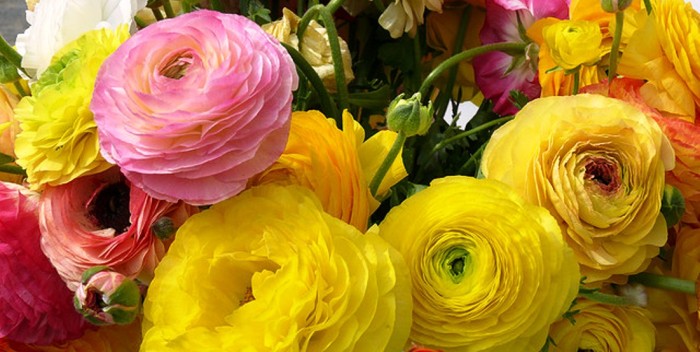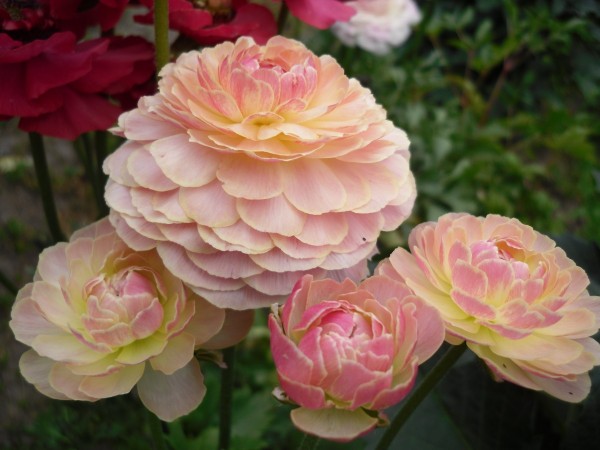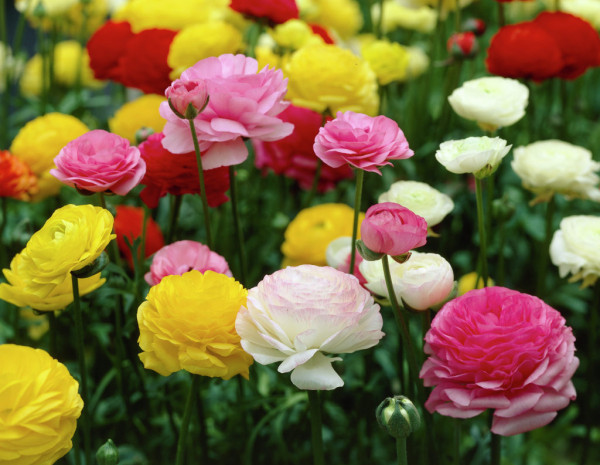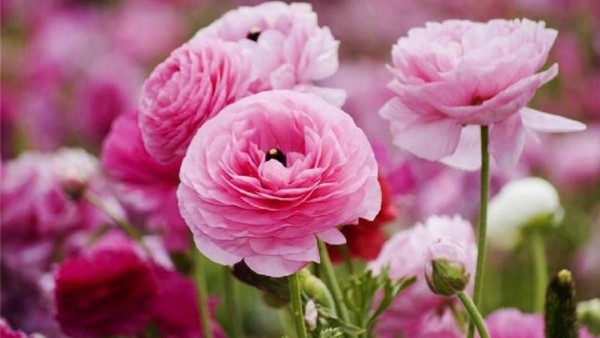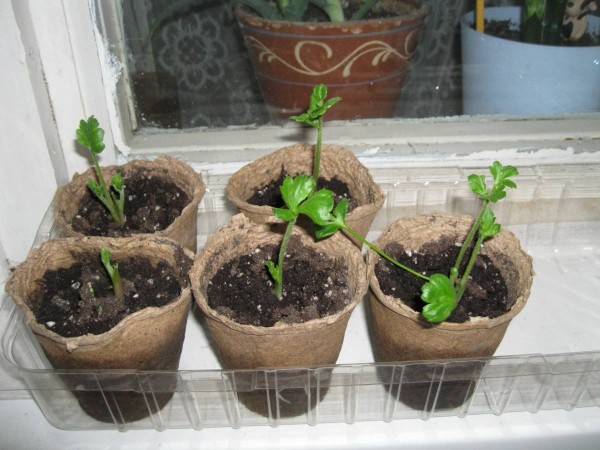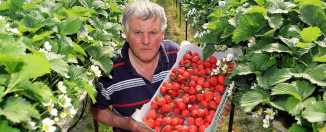Ranunculus: planting and care
The ranunculus flower is not yet well known in our country, but due to its external attractiveness it is confidently gaining popularity among gardeners. More and more people are growing it on their plots or as a houseplant. Let's take a look at the intricacies of this process.
Content
Planting ranunculus
This Asian flower can grow in full sun, but still thrives in partial shade. In such conditions, it will bloom longer, its flowers will be painted in more juicy and vibrant shades. Make sure the ranunculus is not drafted in the location you choose. It is better plant this plant in late spring, when there will definitely be no unexpected frosts.
Choose for this plant a light and fertile soil with a neutral acid-base level. An excellent option is black soil mixed with sand or peat, neutralized with chalk. Do not plant ranunculus in loamy soil. The soil should absorb water well, but not retain it for a long time. Lay a drainage layer to prevent rot. Before planting, the soil must be dug up, enriched with compost and treated with a foundation solution.
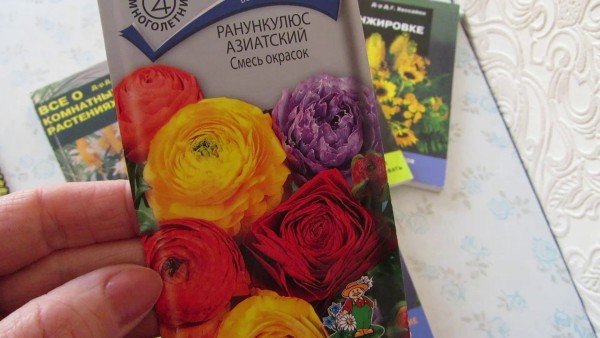 Seeds ranunculus do not germinate well, so germinating them is not easy. They do this in mid-February. Soil is poured into the prepared container and seeds are sown into it. Then they must be sprinkled with a layer of soil about 2 cm. Cover the top of the box with foil or glass. Place the box in a warm and bright place for two or three weeks. After emergence, the film is removed. When two leaves appear on the seedlings, dive ranunculus into separate cups. After warm weather is established, the seedlings can be transplanted to a permanent place. Ranunculus planted in this way will bloom only next year.
Seeds ranunculus do not germinate well, so germinating them is not easy. They do this in mid-February. Soil is poured into the prepared container and seeds are sown into it. Then they must be sprinkled with a layer of soil about 2 cm. Cover the top of the box with foil or glass. Place the box in a warm and bright place for two or three weeks. After emergence, the film is removed. When two leaves appear on the seedlings, dive ranunculus into separate cups. After warm weather is established, the seedlings can be transplanted to a permanent place. Ranunculus planted in this way will bloom only next year.
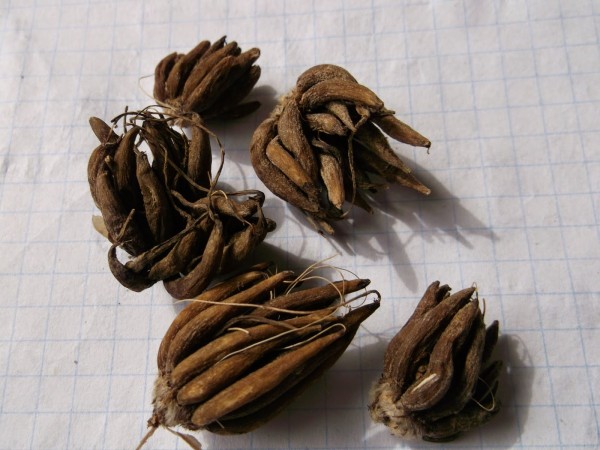 If you do not want to wait such a long time, then growing this flower from tubers is more suitable for you. Before planting, the ranunculus nodules must be soaked for a while in water. To improve growth, add a special agent and a weak solution of potassium permanganate to the water. When planting flowers, observe the distance between individual tubers, at least 10 cm, and place them with the sharp tip down. After a couple of months, the first flower stalks will hatch from each tuber, and after a while the first flowers are formed.
If you do not want to wait such a long time, then growing this flower from tubers is more suitable for you. Before planting, the ranunculus nodules must be soaked for a while in water. To improve growth, add a special agent and a weak solution of potassium permanganate to the water. When planting flowers, observe the distance between individual tubers, at least 10 cm, and place them with the sharp tip down. After a couple of months, the first flower stalks will hatch from each tuber, and after a while the first flowers are formed.
Home ranunculus
Perfect for growing in a pot special varieties, characterized by low growth. It is best to plant ranunculus nodules in the fall. In this case, the first flowers will appear after 3 months.
In conditions of home cultivation, for the external attractiveness of the plant, it is important to plant it at a temperature not higher than 10 degrees. So the plant will not stretch too much and retain its visual appeal. In the future, temperatures up to 20 degrees will be acceptable. Such conditions can be created using a greenhouse.
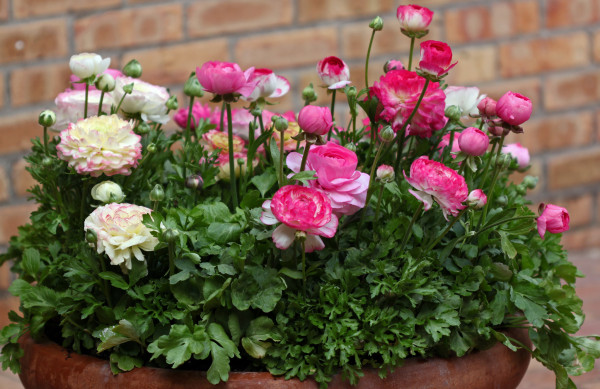 They contain ranunculi in this way:
They contain ranunculi in this way:
- Prepare the soil for these plants from a mixture of soil for flowers and sand.
- Garden buttercups need to be replanted every three years.
- If the rhizome has grown too much, then free it from the children by planting them in other pots.
- Plant these flowers in pots no larger than 20 cm in diameter. Up to three plants can be placed in one large pot.
Ranunculus in the open field
Ranunculus are used as single planted plants and for planting in combination with other garden flowers. For example, planting together with Arabis creates a successful symbiosis. Taller Arabis form the partial shade necessary for garden buttercups and transfer part of the nutrients to them. Ranunculus are used for both bouquets and landscape compositions.
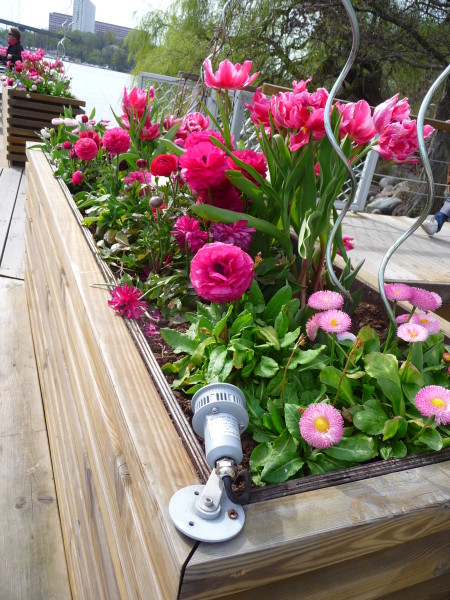 Group beds with ranunculus look very impressive. You can create spectacular patterns from plants of the same color, or you can plant a whole motley carpet of garden buttercups of different colors. These plants are often used to decorate alpine slides and to decorate borders. One of the hottest modern trends is planting garden buttercups in hanging pots or patio containers. In this way, you can create unusual color spots and highlight accents.
Group beds with ranunculus look very impressive. You can create spectacular patterns from plants of the same color, or you can plant a whole motley carpet of garden buttercups of different colors. These plants are often used to decorate alpine slides and to decorate borders. One of the hottest modern trends is planting garden buttercups in hanging pots or patio containers. In this way, you can create unusual color spots and highlight accents.
Ranunculus care
Watering the ranunculus must be done once every two or three days. Although this plant prefers frequent watering, do not fill it with water. This can lead to root rot. If the buds of the ranunculus began to fall off and a white bloom formed on the leaves, then the soil is waterlogged. If, however, red spots began to appear on the leaves, and the buds die off, not having time to open, then this indicates a lack of moisture. It is especially important to water in a timely manner during the period of active growth.
It is necessary to loosen the soil weekly to provide fresh air to the roots and prevent rotting. During the growth period, the plant must be watered with mullein solution, and before flowering, add mineral fertilizers containing potassium and phosphorus.
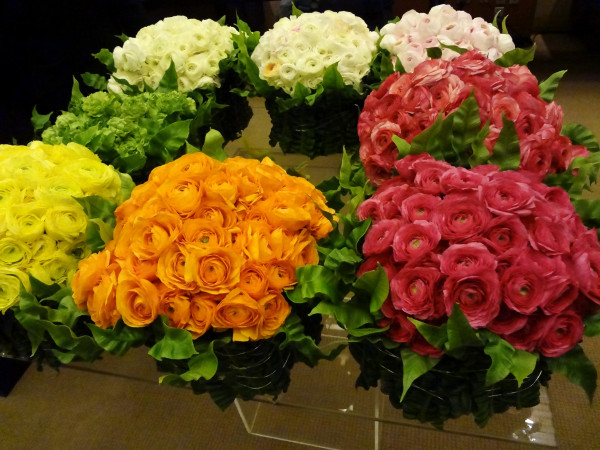 Inflorescences that have already bloomed must be removed. So you can stimulate the formation of new flowers and you can maintain the plant in an ornamental form for longer.
Inflorescences that have already bloomed must be removed. So you can stimulate the formation of new flowers and you can maintain the plant in an ornamental form for longer.
With the onset of autumn, the tubers of the garden buttercup must be dug out, shaken off the soil and soaked for half an hour in Fundazol solution. After that, they are dried for 3 days in a ventilated area. Then, for storage, the tubers must be placed in the refrigerator in a paper bag. If in your region the temperature in winter does not drop below -30 degrees, then you can not dig out the tubers, but simply cover the beds with dry foliage.
